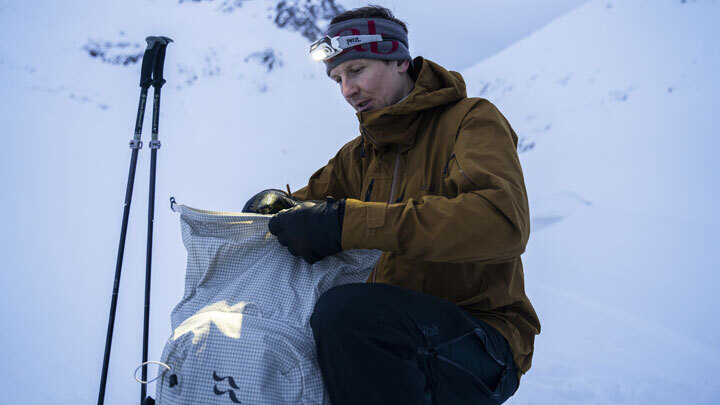Mastering Winter Hiking: A Layering Guide
Posted by Andy Neil on Nov 14, 2023
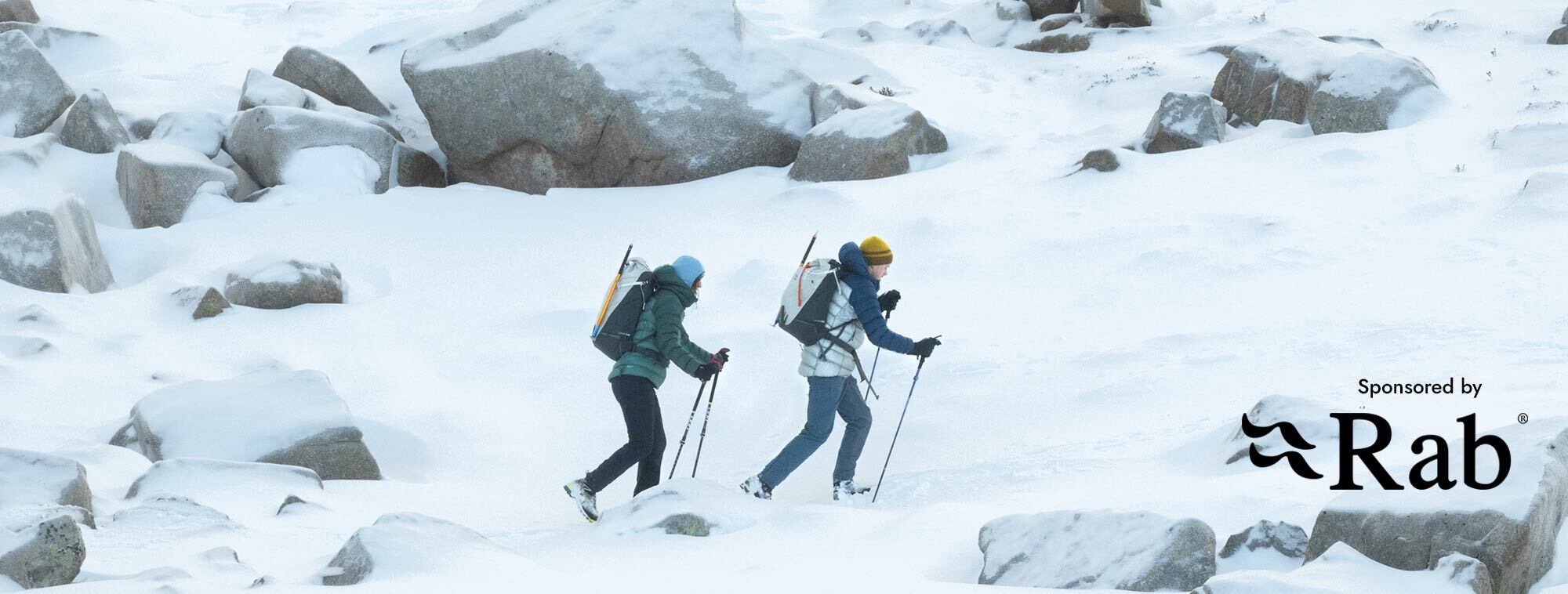
Hiking in the winter can be a magical experience, with pristine, snow-covered landscapes and crisp, invigorating air. However, it also comes with unique challenges, including fluctuating temperatures and unpredictable weather conditions. Mastering the art of layering your clothing is essential to ensure you stay warm, comfortable, and safe during your winter hikes. In this comprehensive guide, we'll break down the components of an effective winter layering system to help you make the most of your cold-weather adventures.
The hiking layering system is crucial because it provides a flexible and effective way to regulate your body temperature and stay comfortable while hiking in changing weather conditions. This system involves wearing several layers of clothing, each with a distinct purpose and can be adjusted as needed.
Remember, the key is to stay warm without sweating excessively, as moisture can lead to rapid heat loss.
Baselayer: Stay Dry and Wick Moisture
The first layer, arguably the most important of your winter hiking outfit, is your baselayer. This layer is in direct contact with your skin and serves two primary purposes: moisture management and insulation. Choose a moisture-wicking, synthetic or merino-wool baselayer that effectively pulls sweat away from your skin, preventing you from feeling clammy and cold. Avoid cotton, as it retains moisture which will make you cold and wet, leading to rapid heat loss and hypothermia.
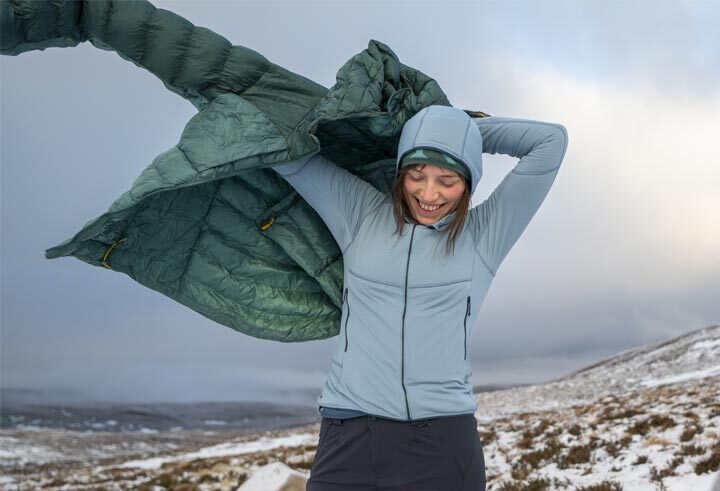
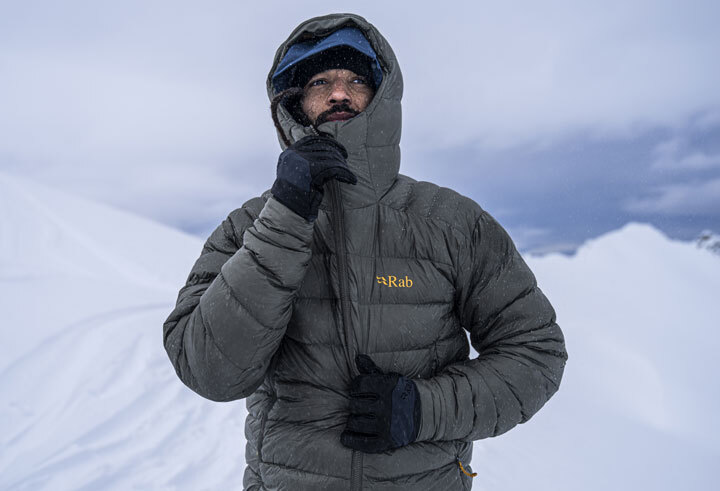
Mid-Layer: Insulation is key
Your mid-layer provides insulation to trap heat and keep you warm. It should be breathable and work with your baselayer to keep moving the moisture away from the skin. Good examples of midlayers use fabrics with properties such as gridded fleece to trap warmth and wick moisture whilst still remaining lightweight so as not to cause you to overheat.
Fleece: Your primary mid-layer will typically be a fleece-style Jacket: this versatile and adaptive layer offers warmth without adding too much bulk. I opt for looser, less fitted fleeces in the winter, something breathable and unrestrictive that fits comfortably under additional layers.
Down or Synthetic Insulated Jackets: A down or synthetic insulated jacket provides excellent warmth-for-weight. Still, when exerting yourself, they can make you overheat, so they are typically not worn when on the move. Instead, they are deployed when you stop to rest or take a break, providing extra warmth when needed. Synthetic jackets will provide an instant hit of warmth whereas down jackets will take a minute or two to warm up.
Outer Layer: Protect from the elements
Your outer layer, often called a shell, is your primary defence against wind, rain and snow. They are crucial when facing winter conditions. It should be breathable to allow moisture to escape. When considering winter hiking jackets, go for at least 20k HH and 20k MVTR, Gore-Tex or Pertex Shield.
Don't neglect your lower half
Baselayer Bottoms: Like your upper body, moisture-wicking baselayer bottoms are essential in cold weather, especially if you don't have dedicated, fleece lined winter trousers.
Waterproof Pants: In snowy or wet conditions, waterproof pants are a must to keep your legs dry.

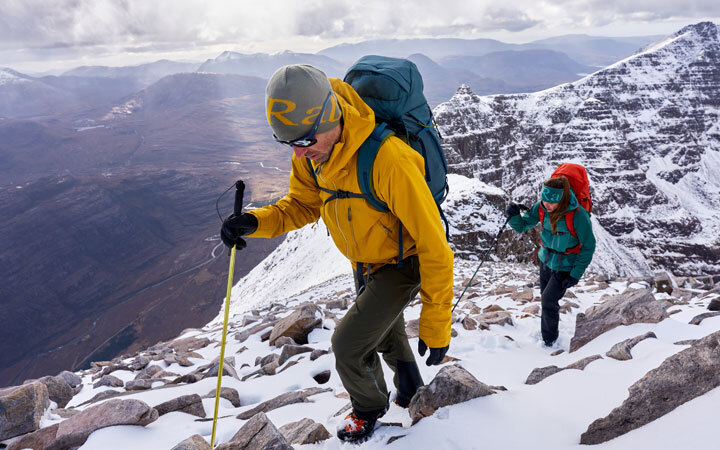
Don't forget your extremities
Accessories play a significant role in maintaining warmth and comfort during winter hikes:
Hat: A warm, moisture-wicking beanie or hat is essential to prevent heat loss from your head. Depending on the conditions, I look for an insulated waterproof hat with ear flaps and a stiffened peak to protect my eyes from snow drift and rain.
Gloves: Layering is not just for your body core. It also applies to your hands. A versatile layering system for your hands consisting of a liner glove, an insulating glove, and a waterproof over-mitt will keep your hands warm and dry without sacrificing dexterity. This is a much better option than only taking one pair of gloves.
A Buff/Tube/Scarf: A Buff is one of the most essential temperature-regulating accessories. They keep your neck warm and prevent cold air from entering your jacket, chilling your core. They can also cover your face or ears should you need additional protection.
Gaiters: If you are heading out into the snow, gaiters are a fantastic way to keep your lower legs warm and dry.
Mastering winter hiking is all about layering strategically to stay warm, dry and comfortable in changing conditions. Following this comprehensive layering guide and adapting it to your specific needs and the weather forecast will prepare you for your next winter adventure. Remember, the key is to stay warm without sweating excessively, as moisture can lead to rapid heat loss. So, adjust your layers as needed to find the perfect balance for a successful and enjoyable winter hike.

|
||
 |
||
|
Andy Neil |
||
|
Andy has been a keen long-distance hiker and wild camping enthusiast since he completed the Cleveland Way in 2015. Since then, he has walked thousands of trail miles all over the UK and is an active member of the Wild Camping UK community, being an admin of the largest wild camping community on Facebook. He strongly advocates for responsible wild camping and believes it is important to leave no trace when camping in the wilderness. He joined the UOG team in 2021 and works as a website developer and content creator. |
||
Hiking in the winter can be a magical experience, with pristine, snow-covered landscapes and crisp, invigorating air. However, it also comes with unique challenges, including fluctuating temperatures and unpredictable weather conditions. Mastering the art of layering your clothing is essential to ensure you stay warm, comfortable, and safe during your winter hikes. In this comprehensive guide, we'll break down the components of an effective winter layering system to help you make the most of your cold-weather adventures.

